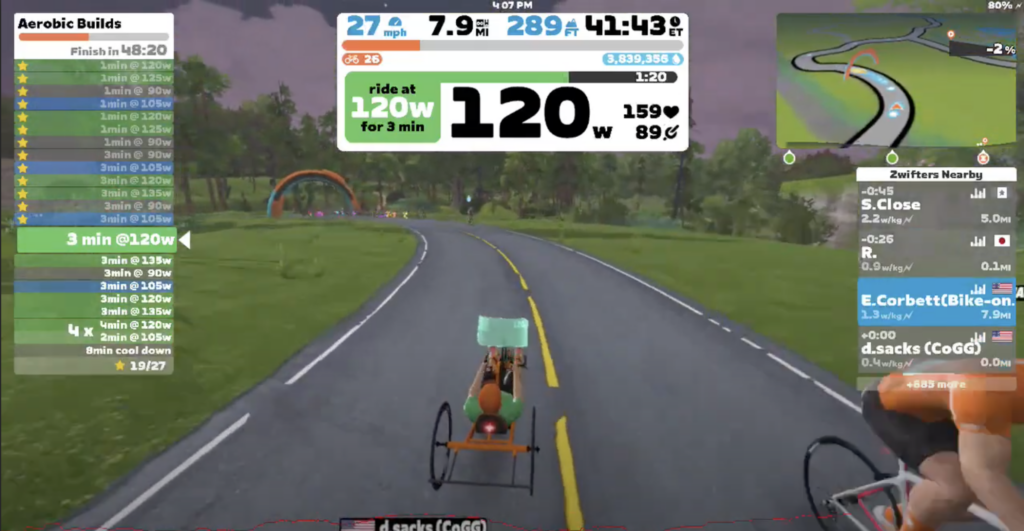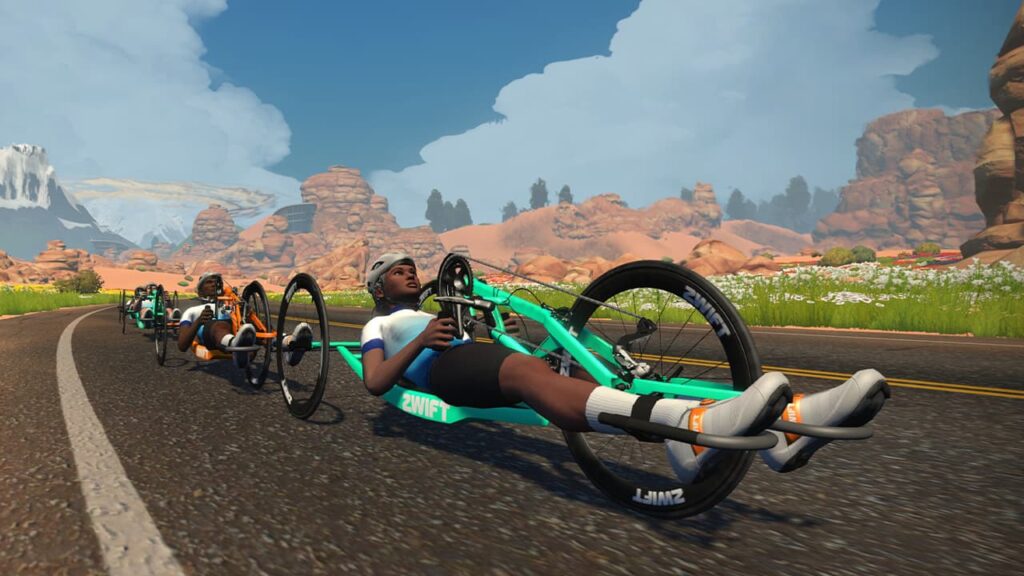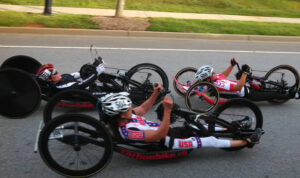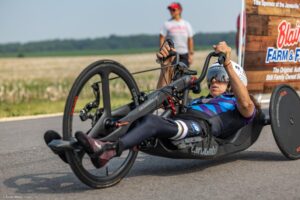Over the past year I’ve discovered smart trainers and Zwift, the online cycling ‘world’. I’m probably a little late to the party but better late than never. For those of you not familiar with smart trainers or e-cycling, a smart trainer is a device that allows you to ride your bike indoors. These have been around for decades, but smart trainers connect to the internet and can adjust the resistance to replicate real routes. In 2015 a company called Zwift took it a step further by creating an online world that featured different routes, bikes, clothing for your in-game avatar, as well as a visual interface on a computer screen, iPad, TV….. More interesting to us, Zwift created a handcycle avatar in 2022.
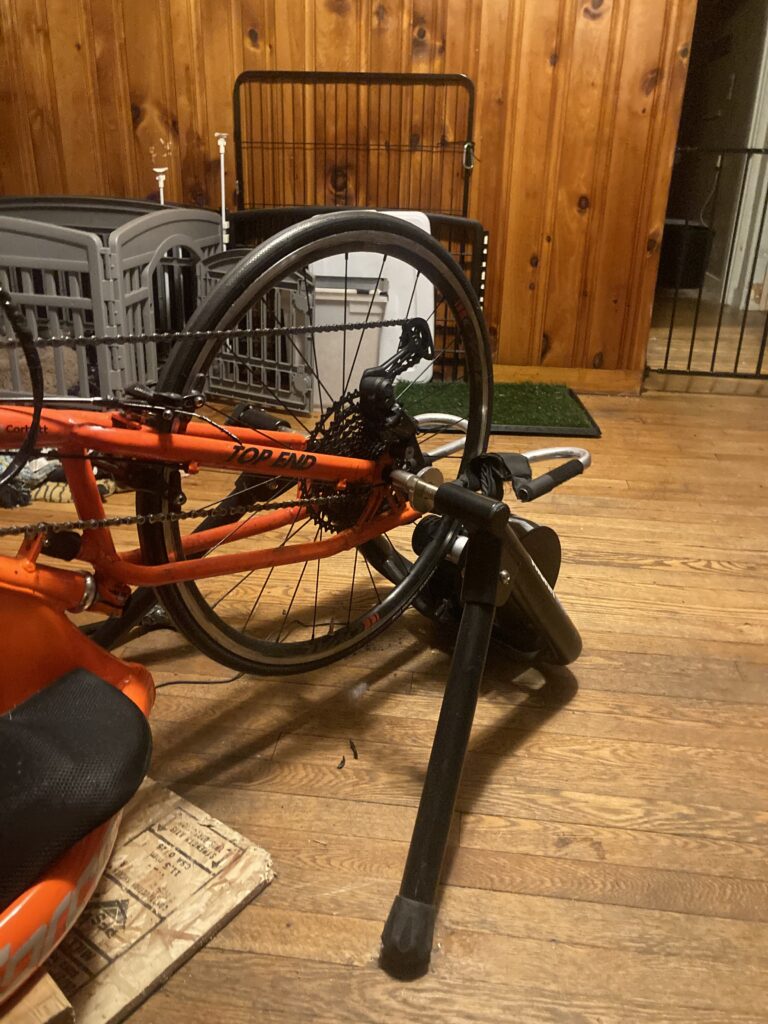
There are two styles of smart trainers, wheel on and direct drive. I’ve got a wheel on, a Wahoo Kickr Snap. It’s super easy to set up and less expensive than the direct drive systems. The only adaptation needed for a handcyclist or recumbent rider is to turn the trainer around 180 degrees and put the front wheel on it. A rolling drum provides more or less resistance to your wheel depending on where you are riding in any of Zwifts ‘worlds’. Direct drive trainers replace your drive wheel with a cassette attached to the hub in the trainer and through that the internet and Zwifts ‘worlds’. There’s more to it if you’re using a handcycle or recumbent though… You’ll need to find a way to suspend the trainer upside down since the drivetrains on those bikes are essentially upside down. It is possible but adds to the cost and complexity. A pro to this is the data is more accurate, you don’t have to calibrate the device as often, and you don’t wear out a tire.

Both systems measure the power you’re putting out though your pedals as watts. The program also displays your heart rate (if you’re wearing a heart rate monitor) and speed. The faster your speed, the faster your avatar moves along the route. Speed is determined by many factors, your pedaling cadence, the power you’re putting out, the percentage of incline or decline on the route, the route surface, asphalt, dirt, cobblestones etc. as well as your height and weight. Like any computer program, the data that comes out is only as good as the data that goes in. The closer to your actual weight that you tell it, the more it will feel like riding outside. That can be a tricky one for handcyclists who may not be able to stand up on a standard bathroom scale. I’ll talk more about a DIY solution to that later though.
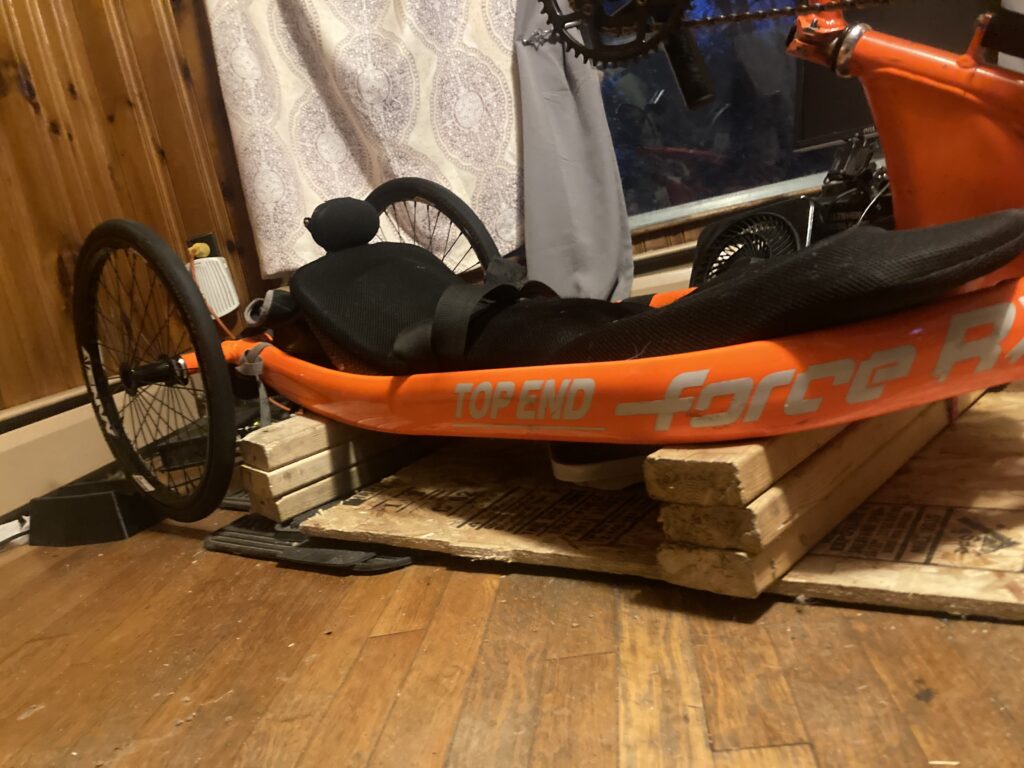
There are many platforms like Zwift, some with more realistic looking video compared to the digitized almost video game look of Zwift, but Zwift is by far the most popular with up to 40,000 from around the world on various routes at the same time. The Zwift ‘world’ is split up into a few real and a few made up worlds. The made up ones are Wattopia and Markuri Islands, while New York, London, Paris, Innsbruck and France are more realistic. They’ve even started adding virtual versions of real world climbs from the Alps and Pyrenees, like Alp du Zwift which is a replication of Alp d’Huez and VenTop which replicates Mount Ventoux. While I’ve never ridden them in real life, there are those that have said the virtual climbs feel like the real thing, minus the beautiful scenery. At Bike-On, we have been hosting group rides through our Zwift Club on weekends during the wintertime in New England. These are great rides for those who want to stay in shape or up to date on their training during the colder seasons when it’s more difficult to ride outdoors. The Challenged Athletes Foundation and some European groups do dome midweek rides.
